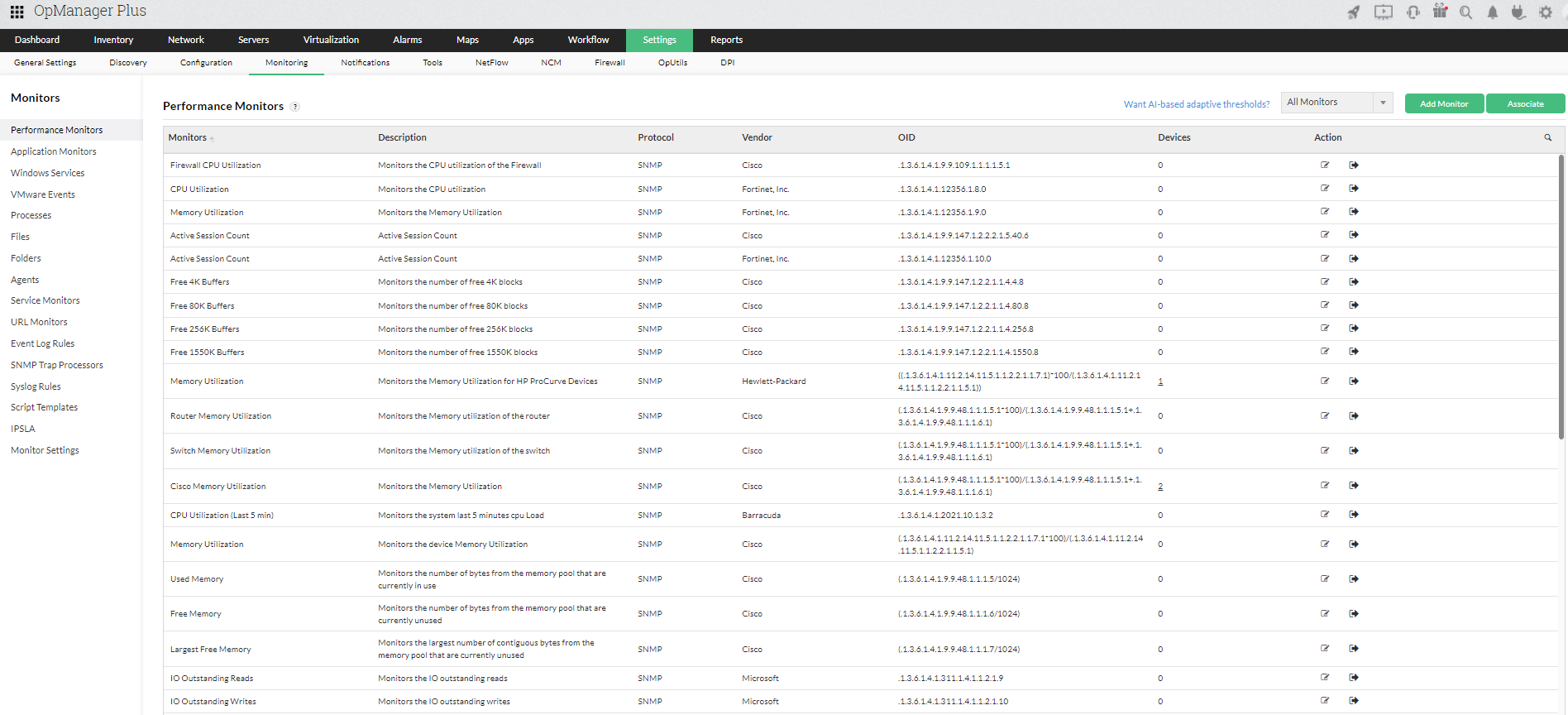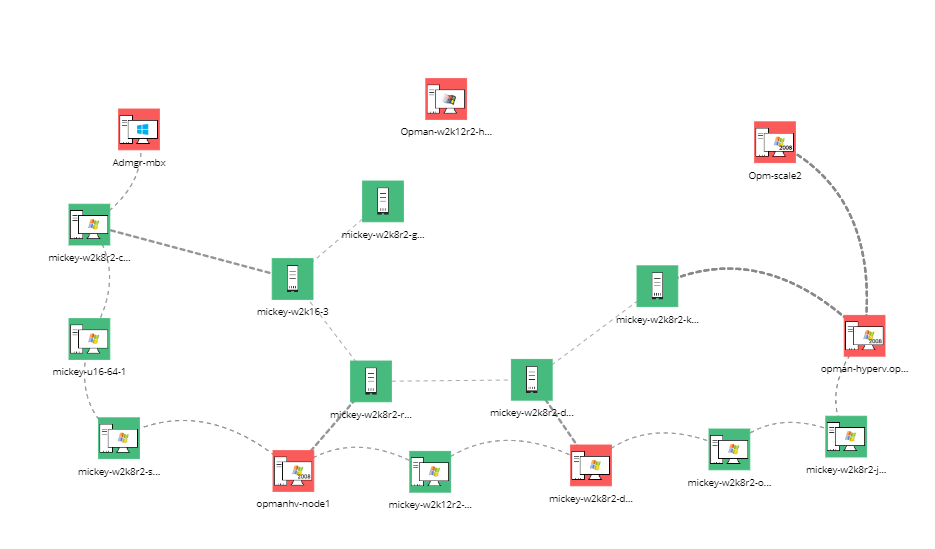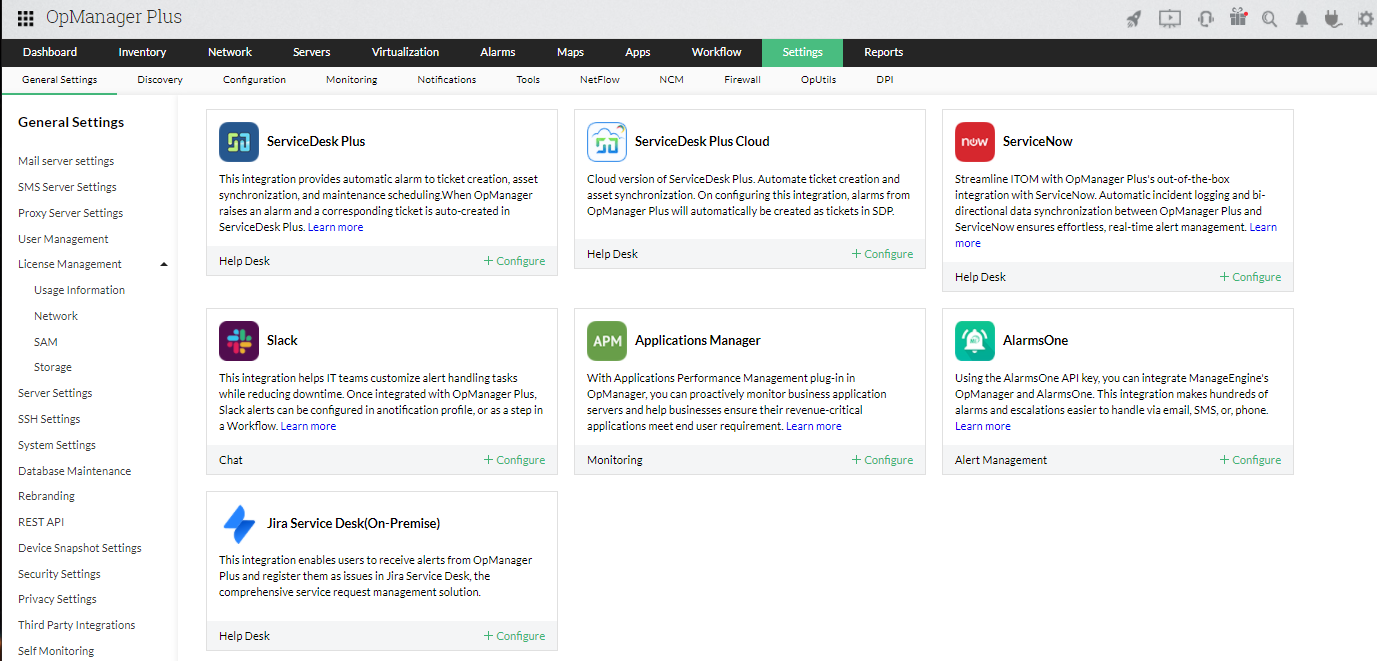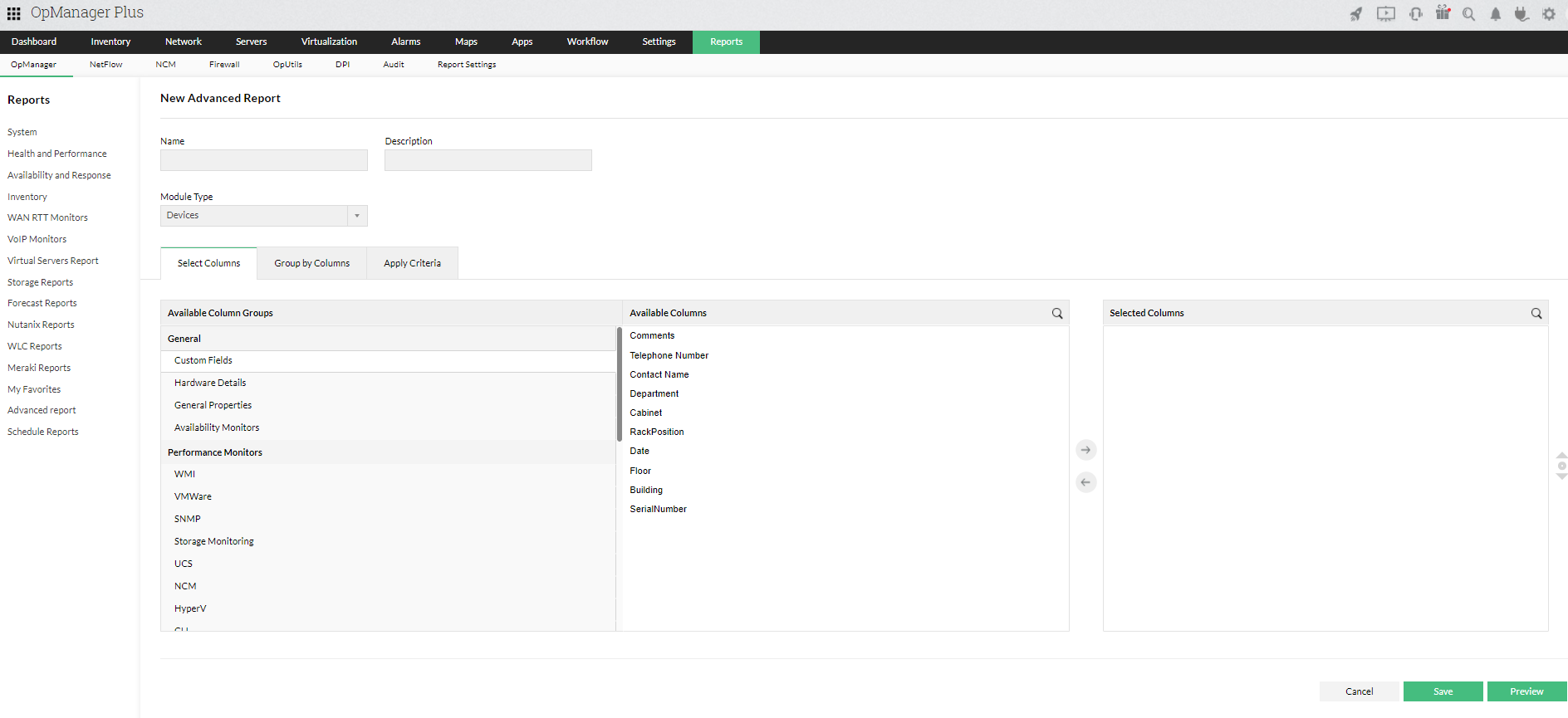Network infrastructure monitoring
Over the last few decades, network infrastructure has grown complex, both in terms of scale and functionality. This rapid growth has been fueled by increasing business demands and growing technological capabilities. According to Gartner, IT infrastructure spending is expected to grow to $3.9 trillion by the end of 2023. Given this, monitoring network infrastructure to ensure its optimal performance and maximum efficiency has become an indispensable priority for any organization that wants to emerge as a front-runner in its industry.
Key takeaways
- A well-laid network infrastructure monitoring strategy should include a clear plan of what and how to monitor your IT infrastructure.
- A unified platform for monitoring, and managing networks - unload the burden of managing multiple tools and failing to granularly monitor the infrastructure caused because of siloed IT infrastructure management.
- OpManager Plus can help you to proactively monitor your client network infrastructure, spot network hitches without much effort, and resolve them with its efficient features.
- Automate rudimentary maintenance tasks with just a few clicks, understand the network health, and forecast potential network issues.
Key network infrastructure components to monitor
Monitoring network infrastructure is a task easier said than done. Considering the technological complexity of individual infrastructure elements and constantly evolving business needs, network infrastructure monitoring has to be well-planned and executed in phases. The key to a successful network infrastructure monitoring strategy begins with a clear understanding of what infrastructure components need to be monitored. Once identified, the components can be categorized into physical, application, or virtual infrastructure.
Physical infrastructure:
This includes all physical hardware, like routers, switches, servers, interfaces, and firewall and storage devices. The key components to monitor in a physical network infrastructure are its performance, bandwidth and traffic patterns, and configuration and compliance changes.
Application infrastructure:
This includes critical software that directly affects the end-user experience. For this reason, it's essential to map key application infrastructure components and monitor them for threads consumed, memory, storage, and more.
Virtual infrastructure:
This includes critical virtual devices, processes, and services in the network. Since the virtual infrastructure directly affects the performance of the physical network infrastructure, it's important to monitor the virtual infrastructure for availability, observe any anomalies in usage, control virtual machine sprawl, forecast capacity usage, and manage access control privileges to ensure a secure, highly efficient network infrastructure system.
Benefits of Network Infrastructure Monitoring
Improved network performance
Monitoring ensures real-time insights into the performance of your network devices, helping to identify and address bottlenecks before they impact users. This proactive approach results in smoother operations and improved user satisfaction.
Enhanced security
Continuous monitoring helps detect unauthorized access, configuration changes, or anomalies, enabling quick responses to potential threats. This ensures a more secure and compliant IT environment.
Reduced downtime
With proactive fault identification and automated alerts, monitoring minimizes unplanned outages by enabling faster issue resolution. This translates to higher availability and improved productivity.
Cost optimization
Monitoring tools analyze resource utilization, helping IT teams allocate bandwidth, storage, and compute power efficiently. This prevents overprovisioning and reduces unnecessary operational expenses.
Streamlined IT Operations
A unified monitoring platform simplifies managing diverse infrastructure elements, reducing the complexity of siloed IT operations. This improves collaboration, efficiency, and decision-making for IT teams.
OpManager Plus: Integrated full stack monitoring and observability solution for complete infrastructure management
ManageEngine OpManager Plus, embraces the principles of observability to present consolidated, all-encompassing infrastructure management capabilities. This empowers organizations to take a proactive approach in monitoring their intricate hardware and software environment, transcending routers, servers, switches, firewall, applications, processes, URLs, and services. The result is a network infrastructure that operates seamlessly, driven by continuous insights and real-time visibility.
Support for a wide range of physical and virtual network infrastructures

OpManager Plus supports efficient IT operations monitoring and management for over 10,000 device types, 450 vendor types, and 150 applications. This includes some of the big names in the hardware and application industry, such as CISCO, HP, Dell, Palo Alto, Fortigate, Mongo DB, Azure, VMware, Nutanix, and Hyper-V. IT admins can monitor over 200 different physical and virtual infrastructure parameters and ensure maximum efficiency of their network devices. Besides the default support for popular hardware and application technologies, OpManager Plus also allows IT admins to create unlimited custom device types and custom monitor types. Name any device and an associated metric in this world—it can be monitored with OpManager Plus.
A unified console for physical and virtual infrastructure monitoring

With a single, unified IT infrastructure monitoring and management tool for all segments (including availability and performance monitoring, bandwidth management, firewall management, configuration management, switch port management, cloud and on-premises application management, and IP address and switch port management), OpManager Plus makes the process of managing a network ecosystem simple and hassle-free. Its powerful dashboard and NOC Views provide single pane visibility into critical network infrastructure management metrics and help network admins stay on top of critical issues. With OpManager Plus, you can effortlessly observe IT infrastructures of varying scales and perform effective monitoring of both physical and virtual environments. Implement real-time change monitoring to pinpoint and manage excessive bandwidth usage across individual devices. Streamline network configuration control by automating tasks, enabling centralized execution of configuration changes across devices in bulk.
Proactive visualization for in-depth fault identification

OpManager Plus' proactive visualization tools simplify the hassle of monitoring for faults in a network infrastructure by allowing network administrators to create custom visual layouts. Its visualization toolkit is comprised of the following:
- Business Views: Enable admins to group network devices into visual groups based on business scenarios.
- Maps: Provide geographical visualization of critical devices.
- Layer 2, Google, and Zoho Maps: Allow IT admins to understand the topographical architecture of their network infrastructure.
- Virtual maps: Provide a visual representation of interconnection between host and virtual machines.
- 3D Floor and Rack Views: Allow admins to visualize their servers and rack components.
These visual tools come with color-coded identification features to help admins understand the bigger picture and identify faults proactively.
Integration with ITSM and REST API for faster fault management

OpManager Plus, a comprehensive network infrastructure monitoring tool goes a step beyond traditional network infrastructure monitoring and helps in proactive fault management with its powerful, out-of-the-box integrations with popular IT service management (ITSM) tools like Service Desk Plus, ServiceNow, and Jira Service Management. These integrations enable network admins to forward any issues identified during the monitoring process to the ITSM tools in the form of tickets. The alerts that are forwarded can be customized to cover all the details necessary for faster troubleshooting.
Besides integration with ITSM tools, OpManager Plus, an efficient network infrastructure monitoring solution also supports REST API, which can be leveraged by network admins to pass critical network monitoring data to any other tool that supports REST API. With its powerful integration features, OpManager Plus bridges the gap between network admins and on-field technicians, helping facilitate faster network infrastructure fault management.
Proactive network infrastructure monitoring with reports

OpManager Plus, a holistic network infrastructure management software comes with more than 300 different reports that can help network admins measure various critical capabilities, including health and performance, bandwidth, firewall security, compliance, configuration changes, and cloud application performance, over a period of time. As an IT observability solution, OpManager Plus presents a proactive, granular and contextual reporting system. This translates into data being collected with more precision and detail than a traditional monitoring solution, immensely helpful in identifying and troubleshooting problems. The contextual data presented in the reports facilitate easy understanding of relationships between different components within an IT infrastructure. Additionally, OpManager Plus is equipped with a custom report builder, scheduled and automated report, making the infrastructure management process much more efficient.
Want to know how OpManager Plus' network infrastructure monitoring capabilities can help your organization's network infrastructure? Try it now, completely free for 30 days!
FAQ on Network infrastructure monitoring
What is network infrastructure monitoring?
+Why is network infrastructure monitoring important?
+
